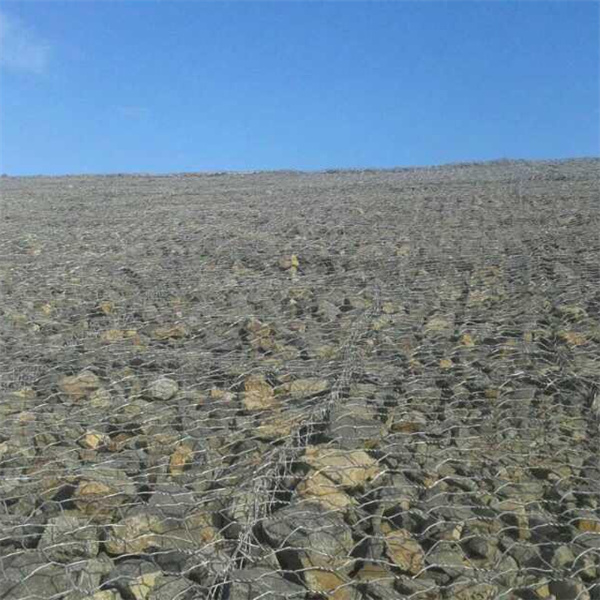दिसम्बर . 16, 2024 08:24 Back to list
Durable and Effective Welded Gabion Wall Solutions for Landscape and Erosion Control
High-Quality Welded Gabion Walls An Effective Solution for Modern Construction
In the modern construction landscape, the demand for sturdy and durable structures is ever-increasing. One innovation that has gained traction in various applications is the welded gabion wall. These structures not only offer exceptional strength and longevity but also blend seamlessly with the natural environment, making them an ideal choice for a wide range of projects.
What is a Welded Gabion Wall?
A gabion wall is typically constructed using wire mesh containers filled with rocks, stones, or other materials. The term welded refers to the manufacturing process where the wire mesh is welded together rather than simply twisted or tied. This welding technique enhances the strength of the gabion structure, making it highly resistant to deformation under load. Welded gabion walls are particularly useful in retaining walls, slopes stabilization, erosion control, and even decorative landscaping features.
Advantages of Welded Gabion Walls
1. Structural Integrity The welded design of gabion walls ensures that the mesh retains its shape and strength over time. Unlike traditional mesh that might unravel or deform, welded gabions maintain their integrity, providing a reliable solution for supporting soil and managing water runoff.
2. Versatility in Design Welded gabion walls can be constructed in various shapes and sizes to accommodate different project requirements. Their customizable nature allows architects and engineers to be creative, making them suitable for everything from modern urban developments to rural landscaping.
3. Eco-Friendly Solution One of the standout features of gabion walls is their environmental impact. By using natural materials like stones, gabions harmonize with their surroundings, promoting biodiversity and minimizing disturbances to the local ecosystem. Additionally, they can be filled with recycled materials, further enhancing their sustainability.
4. Cost-Effective While initial installation costs may vary, welded gabion walls typically require less maintenance over their lifespan compared to other wall systems. Their durability means that property owners save money in the long run due to decreased repair and replacement needs.
high quality welded gabion wall

5. Quick Installation The assembly of welded gabion walls is straightforward, enabling faster construction times compared to traditional masonry walls. This efficiency can be a significant advantage for large projects where time is a critical factor.
Applications of Welded Gabion Walls
Welded gabion walls are utilized in various scenarios, demonstrating their versatility and efficacy
- Erosion Control In areas prone to soil erosion, gabion walls can help stabilize banks and slopes. They allow water to flow through while providing support, ultimately reducing the risk of landslides.
- Retaining Structures These walls are often used in retaining applications, holding back soil and preventing collapse. Their strength allows for the support of significant vertical loads, making them suitable for roads, gardens, and landscaping.
- Noise Barriers In urban areas, welded gabion walls can serve as effective noise barriers. When filled with dense materials, they can dampen sound vibrations, creating a quieter environment for nearby residential or commercial properties.
- Aesthetic Enhancements Beyond functional uses, gabion walls can also serve decorative purposes. With various filling materials available, from smooth river stones to eclectic aggregates, they add visual appeal to parks, gardens, and public spaces.
Conclusion
High-quality welded gabion walls present a compelling option for those seeking robust and aesthetically pleasing construction solutions. Whether used for functional applications like erosion control and slope stabilization or for enhancing landscaping designs, these walls offer a unique combination of strength, versatility, and environmental harmony. As the construction industry continues to evolve, incorporating sustainable and efficient methods, welded gabion walls are likely to remain a key player in modern engineering and architecture. Their ability to adapt to both practical needs and aesthetic desires makes them a valuable investment for any project.
-
HESCO Gabion Baskets for Coastal Erosion Prevention
NewsAug.22,2025
-
Longevity and Durability of River Rock Gabion Walls
NewsAug.22,2025
-
How to Integrate Gabion 3D Walls in Urban Planning
NewsAug.22,2025
-
Reno Mattress Gabion Applications in Civil Engineering
NewsAug.22,2025
-
How to Install Wire Mesh for Gabion Baskets Properly
NewsAug.22,2025
-
Best Materials for Filling a Chain Link Gabion
NewsAug.22,2025
-
Wire Mesh Thickness Impact on Gabion Wall Load Bearing
NewsAug.12,2025






